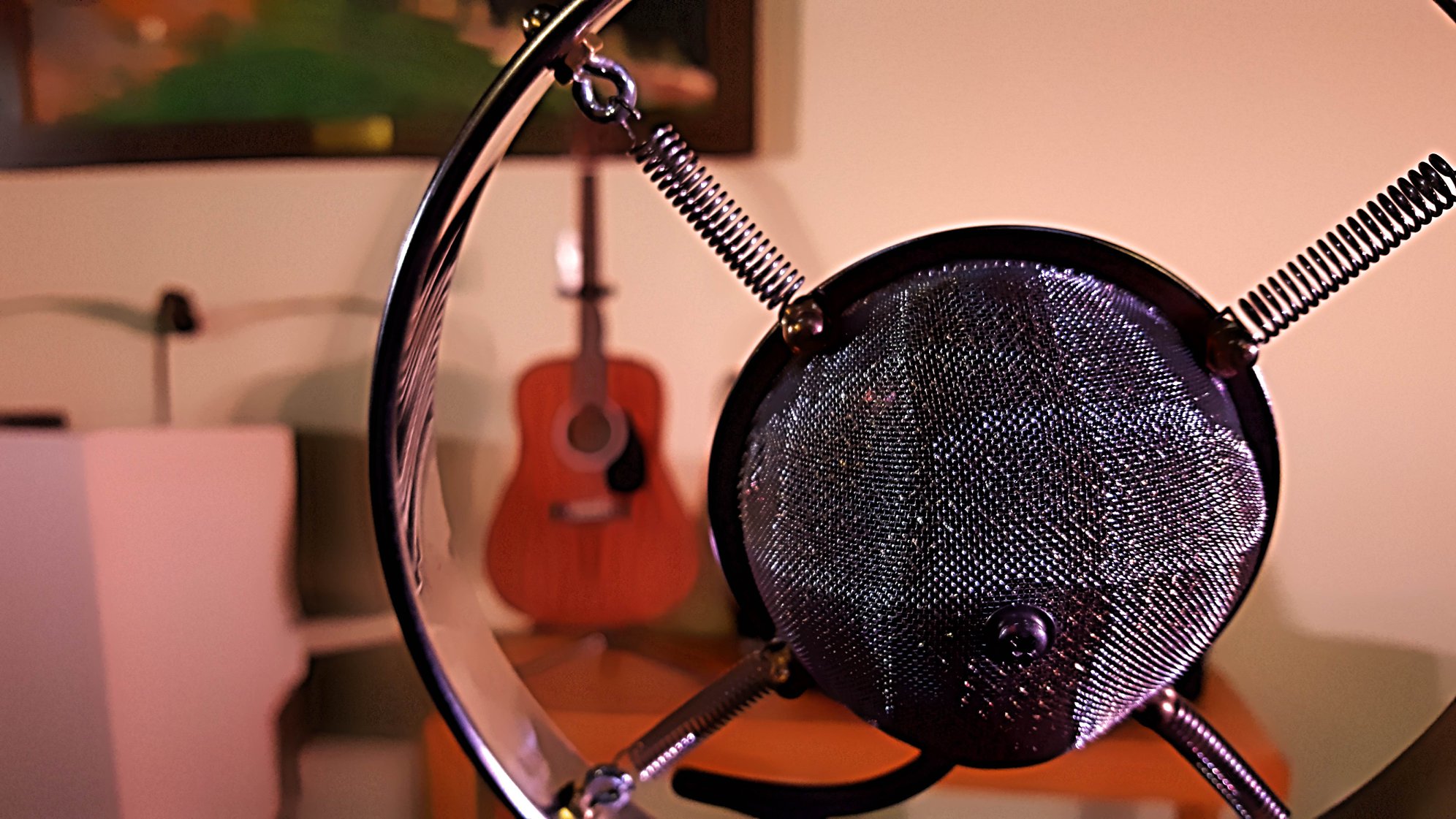It’s very, very different from what you’re probably used to, and also what everybody else is used to.
Please Remember:
The opinions expressed are mine only. These opinions do not necessarily reflect anybody else’s opinions. I do not own, operate, manage, or represent any band, venue, or company that I talk about, unless explicitly noted.

 Want to use this image for something else? Great! Click it for the link to a high-res or resolution-independent version.
Want to use this image for something else? Great! Click it for the link to a high-res or resolution-independent version.I recently had the opportunity to really, really, give the “Good Ol’ College Try” to that technique where musicians gather around a single mic. We did have some spot microphones for extra help and coverage, but the single condenser down-center was definitely the focal point.
The experience was very educational for yours truly. It was one of those times where a whole rush of concepts suddenly transition from the abstract to a concrete understanding. That being the case, here are those concepts (in no particular order):
You have to understand the equipment in play.
That is, you have to understand because other folks might not – and you have to recognize why they might not. There is a conception (which did crop up during the show advance and other prep) that “large diaphragm condenser = omnidirectional mic.” This is, of course, mistaken. Even so, a directional mic like the one we had is handy when players still expect, and possibly are heavily reliant on, the audible support of monitor wedges.
That is somewhat beside the point. The real point is that, of course, an omni mic exhibits consistent tonality vs source-to-capsule distance. A directional unit, on the other hand, delivers far more low-frequency information when a source is close enough for that information’s amplitude to overwhelm the phase differences which produce directionality. You get close, and the bottom end response gets a boost.
The practical upshot for me was that the show’s tonality was heavily dominated by midrange and high-frequency information that I’m not used to hearing without low-frequency content in balance. In other words, it was “thin,” and I didn’t like it all that much. However, a good number of other listeners were quite pleased.
People recognize the concept, but may not be prepared to execute with it.
It’s my estimation, absent any value judgement, that a great many players simply don’t naturally conceive of a band having a polished blend without detailed intervention from production. The idea is lost, then, that everybody else has to drop their intensity to match that of the quietest player. It is simply culturally ingrained that somebody gets turned up to match the average, rather than the average being adjusted downward in some way.
This being the case, it was critical to any semblance of success that those spot mics were available. I had a bit, though only a small amount, of wiggle room to give certain players a push when they needed it.
To actually execute properly on the “one big mic” idea, players have to practice the specific techniques surrounding the strategy. It’s not something that is likely to be achieved on an in-the-moment basis.
Everyone, including you, has to adjust their relationship with audio engineering.
Following on from the previous section, it’s important that I recognize how the conceptions of musicians are often reflected by audio humans, including this one. My mental model of how a band sounds through a PA is that of everything being close-miced and able to be tweaked significantly. This is, of course, similar to what I described above about how a “produced” sound is what’s expected from many musicians.
What we all assume, in other words, is that we (the audio engineer) is there to mix the band; To glue them all together.
With the single mic approach, you really are NOT there to mix the band. You are, instead, on hand to be a steward of the amplification system. It’s your job to find the (possibly fiddly) balance of tonality, gain before feedback, and final, total volume enhancement, and then to be on hand if anything misbehaves. The band is the band, their blend is their blend, and you have very little ability to bend any of that around your desires. Everyone involved, then, has to have a certain level of comfort with that situation. For people used to modern sound reinforcement, this comfort level may not be immediately or easily reached.
Tweet